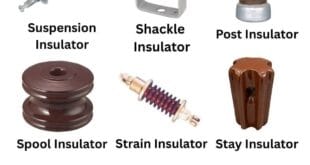Electrical Distribution Substation: The Nerve Center of Power Delivery
In the intricate web of electrical infrastructure, distribution substations play a pivotal role, serving as the critical juncture where high-voltage electricity is transformed and distributed to end-users at manageable voltages. These often inconspicuous yet indispensable facilities are the backbone of modern electrical grids, ensuring the reliable delivery of electricity to homes, businesses, and industries.
The Heart of the Grid: Function and Importance
A distribution substation acts as a crucial link between the high-voltage transmission system and the lower-voltage distribution network. It receives electricity from the transmission lines, typically operating at voltages ranging from 69 kV to 765 kV, and steps down the voltage to levels suitable for local distribution, commonly between 4 kV and 35 kV. This voltage reduction is essential for safe and efficient power distribution across communities.
One of the primary functions of a distribution substation is voltage transformation. Through the use of transformers, the substation converts electricity from high to low voltage or vice versa, depending on the direction of power flow. Moreover, these substations may also incorporate protective devices such as circuit breakers, fuses, and surge arresters to safeguard against overloads, short circuits, and other electrical faults.
The strategic placement of distribution substations throughout an electrical grid ensures optimal coverage and minimizes transmission losses by reducing the distance electricity travels at high voltages. This decentralized approach enhances grid resilience and reliability, as any disruptions in one area can be isolated, preventing widespread outages.

Components and Design
Distribution substations consist of various components designed to manage voltage levels, control power flow, and ensure system stability. These components include:
- Transformers: The core component responsible for voltage transformation. Step-up transformers increase voltage for transmission, while step-down transformers reduce voltage for distribution.
- Switchgear: Devices used to control, isolate, and protect electrical equipment. Switchgear includes circuit breakers, disconnect switches, and protective relays.
- Busbars: Conductive bars or rails that serve as the primary means of transmitting electrical power within the substation.
- Capacitors and Reactors: Used for voltage regulation and power factor correction to maintain system efficiency.
- Control and Monitoring Systems: Automation and monitoring equipment for remote operation, data acquisition, and fault detection.
Distribution substations are typically designed with redundancy and flexibility in mind to ensure uninterrupted power supply and facilitate maintenance activities. They may also incorporate smart grid technologies, such as Supervisory Control and Data Acquisition (SCADA) systems, to optimize operations, improve response times, and enable real-time monitoring and control.
Challenges and Future Trends
As the demand for electricity continues to grow and renewable energy sources become increasingly integrated into the grid, distribution substations face several challenges and opportunities:
- Grid Modernization: Aging infrastructure and evolving energy needs necessitate the modernization of distribution substations to accommodate renewable energy integration, electric vehicle charging, and demand response programs.
- Cybersecurity: With the proliferation of digital communication and automation technologies, securing distribution substations against cyber threats is paramount to safeguarding grid reliability and resilience.
- Distributed Energy Resources (DERs): The rise of DERs, including solar panels, wind turbines, and battery storage systems, requires distribution substations to adapt to bidirectional power flows and manage grid stability effectively.
- Grid Resilience: Climate change-related events, such as extreme weather events and natural disasters, highlight the importance of enhancing grid resilience through advanced grid monitoring, predictive analytics, and rapid restoration strategies.
In conclusion, distribution substations serve as the backbone of electrical distribution systems, facilitating the efficient and reliable delivery of electricity to consumers. As the energy landscape continues to evolve, distribution substations will play a pivotal role in shaping the future of power distribution, ensuring sustainability, resilience, and accessibility for all.
 Electrical Engineering World Wiring a Brighter Tomorrow!
Electrical Engineering World Wiring a Brighter Tomorrow!


